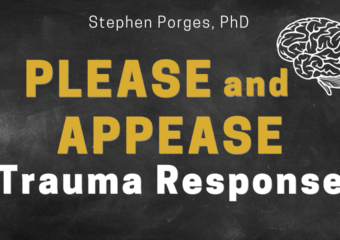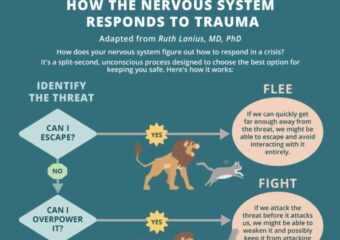You’ve probably heard of fight, flight, and even the freeze response to trauma. But there are some newer defense responses – ones that experts have only recently begun to name and understand – that are critical to our clinical work. One of those defense responses is “please and appease.” You may have also heard expert […]
[Infographic] – How the Nervous System Responds to Trauma
It can often be difficult for trauma survivors to understand how or why they reacted a certain way during a traumatic experience. Instead of seeing their trauma response as the result of a split-second, unconscious decision made by their nervous system, your client may blame themself for not reacting differently. This can be especially true […]
Understanding Trauma Triggers, with Stephen Porges, PhD
In the aftermath of trauma, some clients struggle to feel a sense of connection to their bodies. And when clients can’t properly interpret the sensations or messages that the body is sending to the brain, it can be very difficult for them to get a handle on their triggers. So in the video below, Stephen […]
Working with Emotional Distress – with Janina Fisher, PhD
When it comes to treating trauma, we’re often working with clients who have a low tolerance for distress. And when faced with traumatic memories or difficult emotions, they may respond by slipping into a state of hypoarousal to defend against the pain. So in the video below, Janina Fisher, PhD shares how she helps hypoaroused […]
Treating Trauma: Strategies to Help Clients Feel Safe
Trauma can rip away a client’s sense of safety . . . . . . and leave them with a nervous system that is primed to detect threats. That’s why as practitioners, it’s so important that we have strategies to build a client’s feelings of safety before we help them process traumatic memories. So in […]




